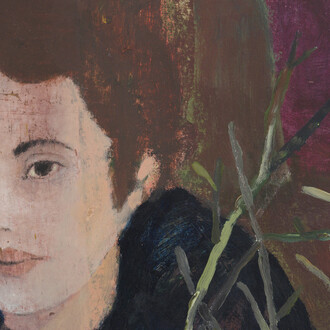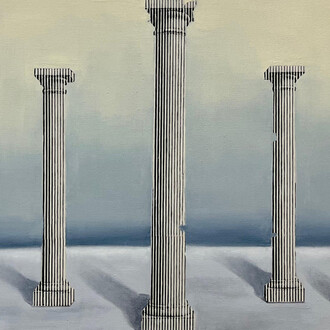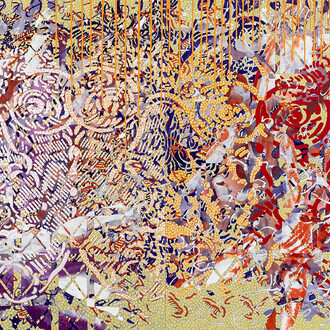To consider Robert Cottingham’s painting by first evoking what it does not show might seem cavalier and paradoxical. Even stranger to extrapolate from what would then be understood as an absence to grasp the cardinal properties of his project. After all, as an art of framing, painting is indeed an operation of limitationof omission, of exclusion– by which something is made accessible to the eye, restored to its uniqueness, singularized, sometimes magnified, at the expense of all the rest, offered outside the ordinary course of events on the restricted plane of the canvas. When looking at it, we can say that we are there, utterly devoted to the form of the subject. What is never seen in Cottingham’s work obviously cannot be characterized as a lack since it is, after all, a deliberate banishment entirely consistent with his initial intuitions.
With one exception […] the human figure is absent from his work. Exiled without return, in an off-screen made improbable, almost unthinkable […] 'the things I choose to paint say much more about man than painting a man.'
The painting is simultaneously the instrument and the destination of the photographic capture, aiming less at sublimating these details than determining them as objects soon relieved of their condition as fragments and then meants to become a legitimate whole in themselves. From this perspective, Cottingham’s art, like that of other photorealist artists, is to be understood less in terms of a form of dependence on photography than as seeking to deceive its quality as a faithful reflection of reality. Pop art had already cultivated a form of disillusionment with photography. For Lichtenstein, Warhol, or Rosenquist, among others, the point was to transform media images (from comic strips to pictures of consumer products or journalistic snapshots) under an ironic prism that required a transfiguration of ready-made images through a strict mastery of plastic means. For the generation of artists who followed him, it was a matter of leaving the 'interiors', abandoning the persistent model of still life and challenging photography for the privilege it had acquired in the representation of the real world.
It is no coincidence that, at the end of the nineties, Cottingham undertook two parallel series that can be understood less as a logical continuation of the American Alphabet than as a redistribution of the notion of the image and the letter. On the one hand, paintings, watercolors, and drawings of vintage cameras from the 1950s (Diomatic, 2000); on the other, typewriters from the same period, seen from all angles, sometimes, revealing their internal mechanism, as in the hypnotizing Underwood side view (2004), for example. No longer the images and letters in their spatial rollout, but the instruments that produce them, intermediaries between the creative intention and its concretization, mechanical means that condition their shapes.
(Excerpts from Alain Cueff's text "Shifting signs" published in the exhibition catalog)
















